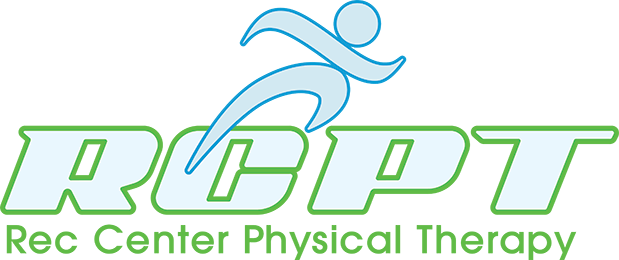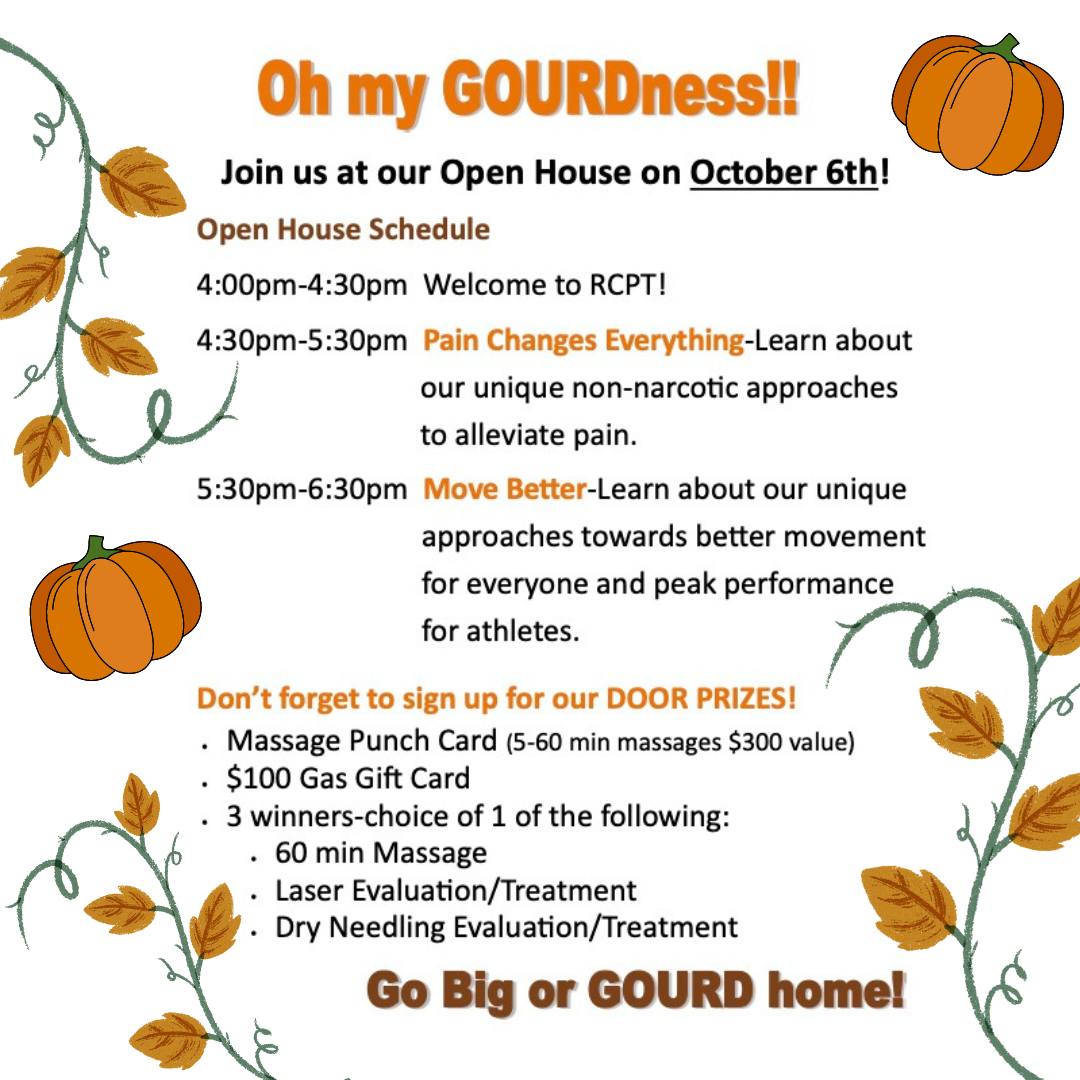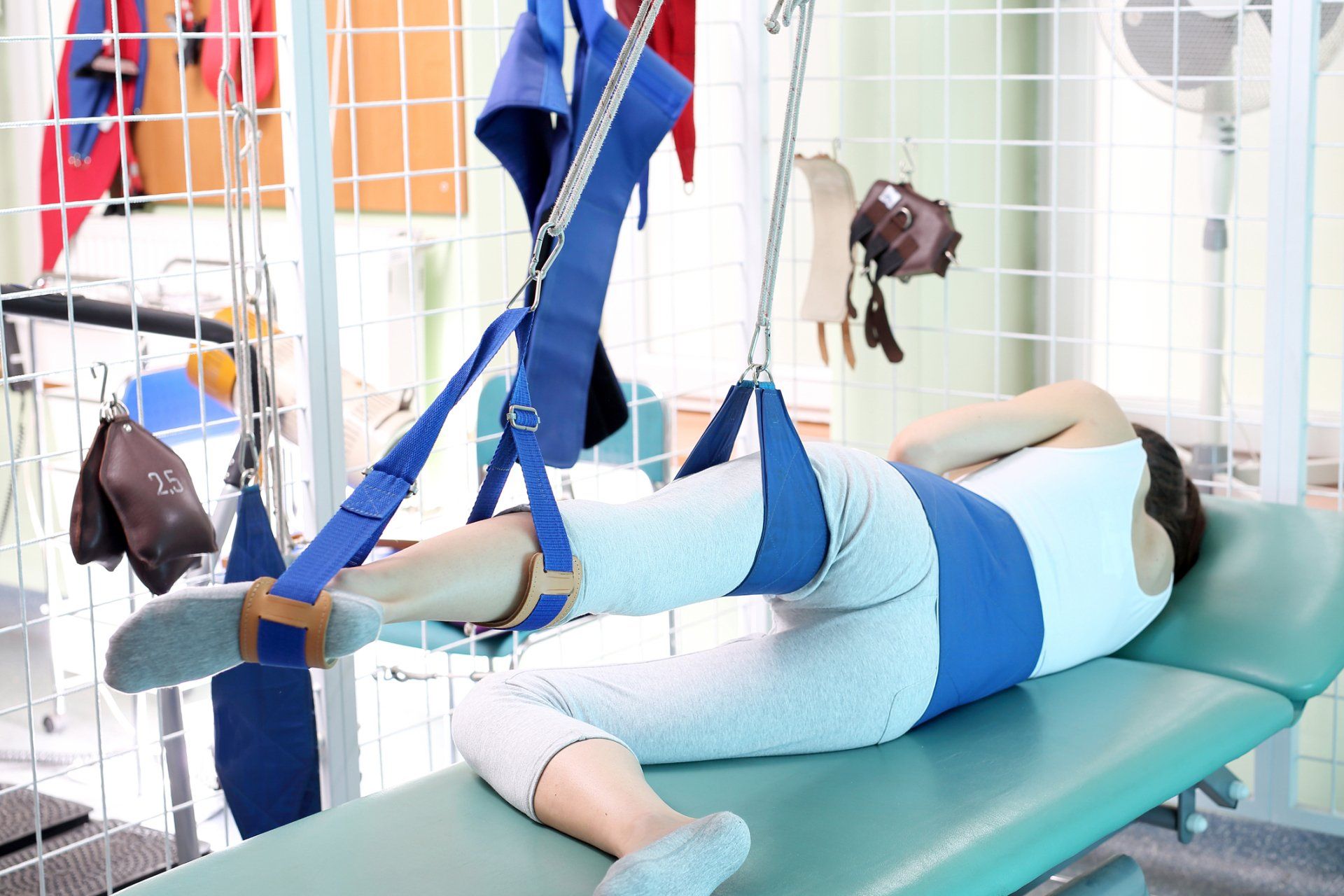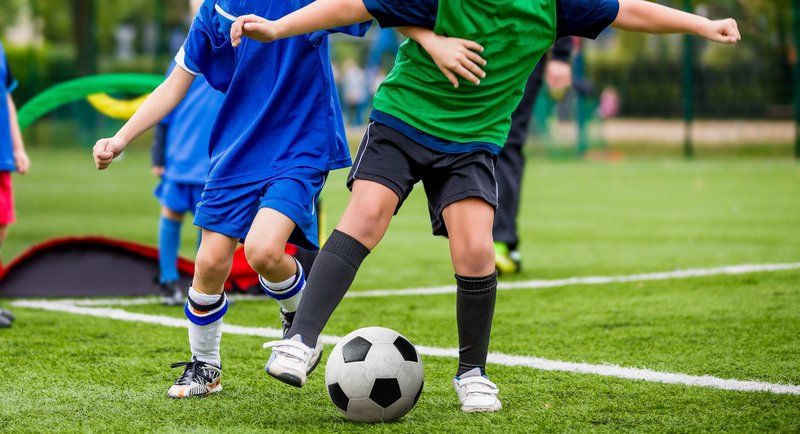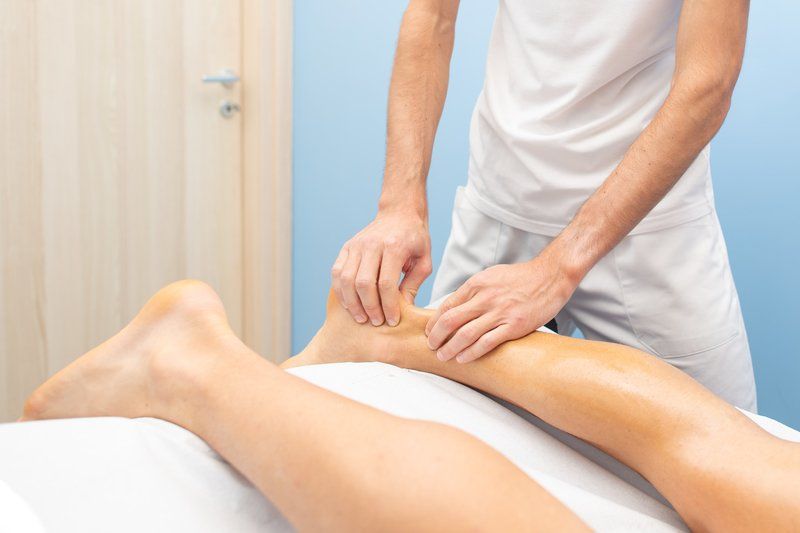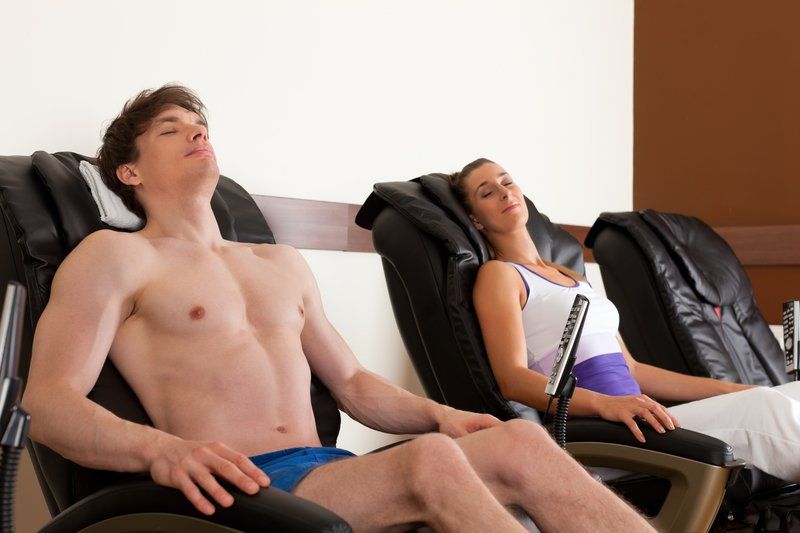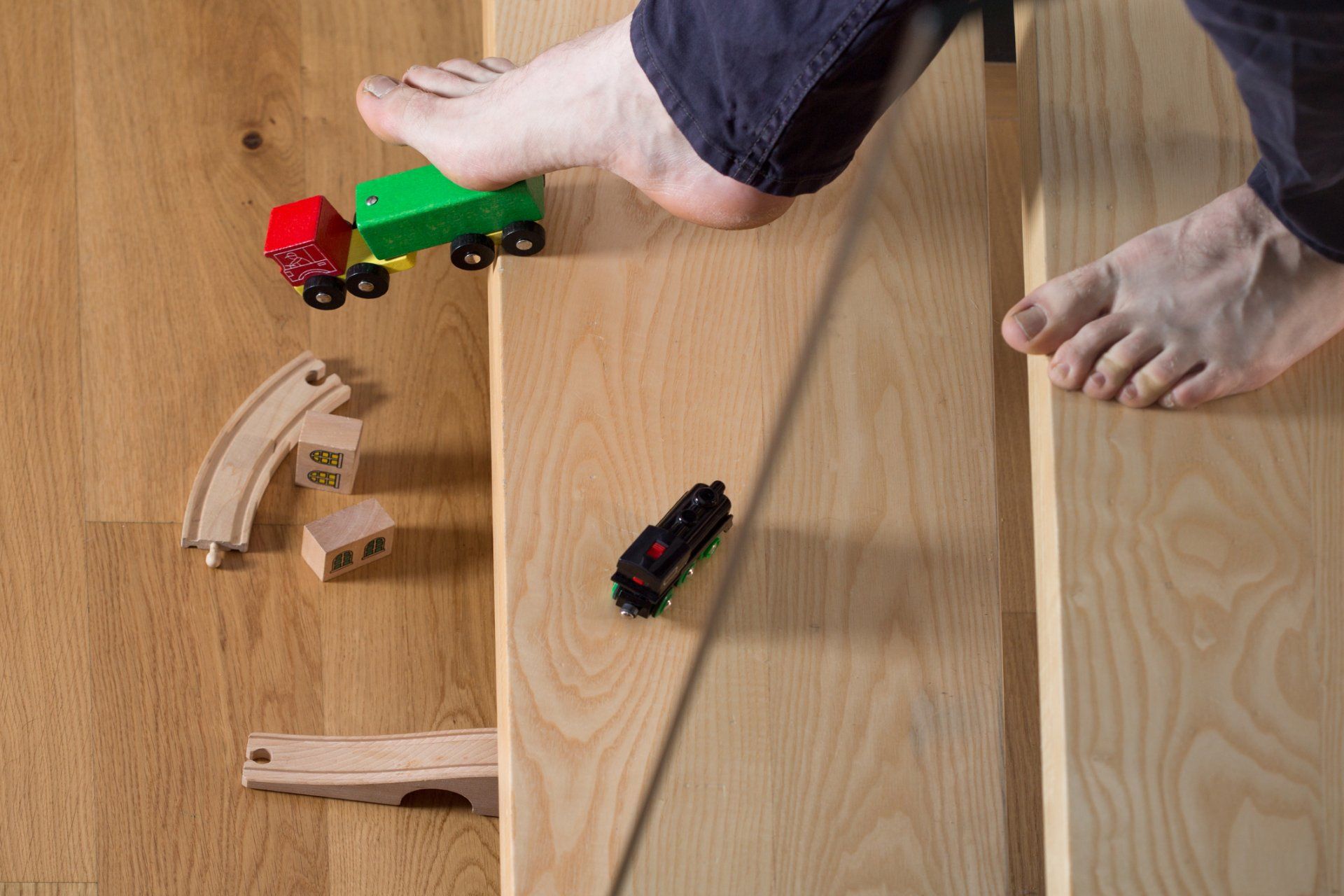Physical Therapy Options for a Bad Knee
Dotcom Design • July 3, 2019
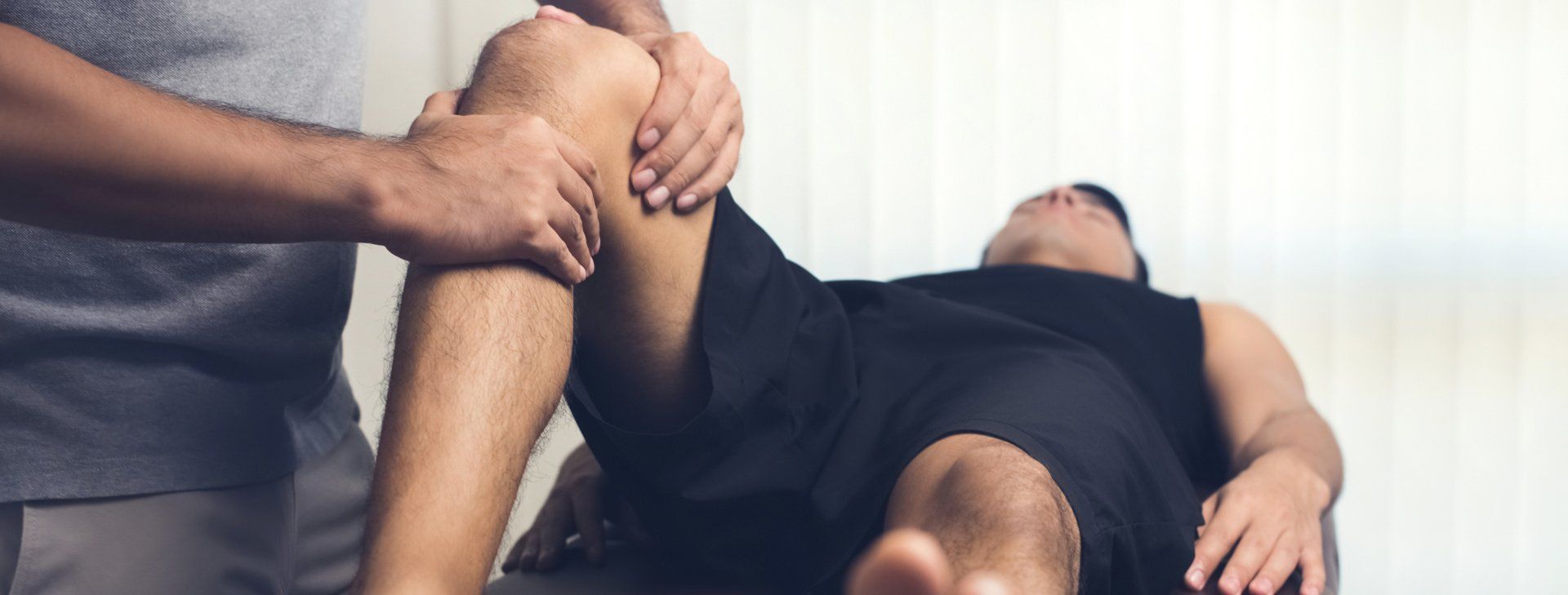
A knee injury can be a very debilitating situation and may cause you a lot of pain and suffering that can make your life more difficult. However, physical therapy in Cedar Rapids, Iowa
for this issue can ensure that you don't experience any more suffering than necessary and ensure that you are happy and healthy during your recovery.
Your post-injury routine will go in three different phases to ensure that your knee recovers: range of motion, strength, and balance. Each of these sub-routines provides benefits for your recovery that are essential and which you'll progress through in a streamlined and straightforward manner.
For example, a simple stretch of your knee may help restore some of your range of motion and ensure that you don't experience any stiffness after you have recovered. However, these types of exercises often vary in a multitude of ways and emphasize careful and controlled motion rather than any jerky kind of action. Typically, you can anticipate a very controlled and simple movement.
You'll not only work the range of your knee up and down on the joint but from left to right as well. The latter range of motion mentioned here is often neglected as few people realize that the movement of their knee from side to side is essential or relevant to their strength and stability. While your knee obviously doesn't move much in these directions, the movement it does have is critical to your physique.
While you can go through these exercises on your own at home, you may want to consider having a professional help you with them. A physical therapist can sit down with you and show you how to improve your flexibility and range of motion in a way that doesn't cause more damage. Just as importantly, they can show you how to keep your knee straight while you work to avoid further problems.
A few physical therapy exercises you'll perform for your strength include quad sets, straight leg raises, short-arc quads, twists, crunches, and other activities that focus on your core and your hips. Why will you try to increase your strength in your hips and core? These muscles help to support the strength and stability of your knee joint. Without strong muscles in these areas, your recovery will go very poorly.
You'll also perform exercises to increase the strength of your lower extremities, including your calf muscles and even areas near your ankle. These routines may seem unnecessary at first, but they provide many benefits. For example, workouts along your legs ensure that the rest of your body is as strong as your knee and helps to keep you balanced and prevents other complications with your knee.
Should you do these exercises at home or only with the help of a professional? That all depends on a variety of factors. For example, you can probably do most of these routines on your own without difficulty, as long as your knee is strong enough. However, you should talk to your physical therapist if you aren't sure about the strength of your knee or if they haven't given you the okay to exercise yet. In this situation, they may guide you through some routines at first to help you out.
Most of these physical therapy routines will focus on putting you on your injured leg while you raise the non-injured one. At this point, you'll work your knee joint and try to regain the balance you lost after your injury. Often, you'll focus heavily on your core muscles to ensure that you are healthy and balanced and to avoid accidents that could cause further damage.
However, balance routines do more than provide extra balance for your knee – they also help you recover some of the balance you may have lost after your injury. Simply put, you'll likely have been walking on crutches after your injury or with other aides. These assisting devices are necessary for overcoming your trauma but can become an issue if you rely on them too much. Unfortunately, they'll often take over for your balance and make walking more difficult later.
Balance exercises are usually among the safest that you can perform for your knee but do come with a risk: falling. Since your knee is going to be a little weaker than usual and your sense of balance a little off, you may end up falling if you aren't careful. Unfortunately, this may result in you getting injured or further hurting your knee. Try to hold onto something while you work – like a physical therapist – to ensure that your knee is stable and you don't get injured.
Your post-injury routine will go in three different phases to ensure that your knee recovers: range of motion, strength, and balance. Each of these sub-routines provides benefits for your recovery that are essential and which you'll progress through in a streamlined and straightforward manner.
Range of Motion Routines
After an injury, your physical therapy
will focus on a variety of care options. One of the first of these is the range of motion of the affected joint. The range of motion dictates how far your joint can move and can limit you if you don't properly prepare your joint with appropriate exercises. Just as importantly, range of motion exercises can help ensure that you don't struggle to overcome issues during your recovery.
For example, a simple stretch of your knee may help restore some of your range of motion and ensure that you don't experience any stiffness after you have recovered. However, these types of exercises often vary in a multitude of ways and emphasize careful and controlled motion rather than any jerky kind of action. Typically, you can anticipate a very controlled and simple movement.
You'll not only work the range of your knee up and down on the joint but from left to right as well. The latter range of motion mentioned here is often neglected as few people realize that the movement of their knee from side to side is essential or relevant to their strength and stability. While your knee obviously doesn't move much in these directions, the movement it does have is critical to your physique.
While you can go through these exercises on your own at home, you may want to consider having a professional help you with them. A physical therapist can sit down with you and show you how to improve your flexibility and range of motion in a way that doesn't cause more damage. Just as importantly, they can show you how to keep your knee straight while you work to avoid further problems.
Strength Workouts
After your doctor has approved your range of motion exercises, you'll focus on these for a while until you get the go-ahead for knee strength routines. These are among the most important that you'll perform because they increase the strength of the muscles around your knees and in your legs. Just as importantly, they help you to regain any lost strength you may have suffered after your knee injury and keep you in shape for years to come.
A few physical therapy exercises you'll perform for your strength include quad sets, straight leg raises, short-arc quads, twists, crunches, and other activities that focus on your core and your hips. Why will you try to increase your strength in your hips and core? These muscles help to support the strength and stability of your knee joint. Without strong muscles in these areas, your recovery will go very poorly.
You'll also perform exercises to increase the strength of your lower extremities, including your calf muscles and even areas near your ankle. These routines may seem unnecessary at first, but they provide many benefits. For example, workouts along your legs ensure that the rest of your body is as strong as your knee and helps to keep you balanced and prevents other complications with your knee.
Should you do these exercises at home or only with the help of a professional? That all depends on a variety of factors. For example, you can probably do most of these routines on your own without difficulty, as long as your knee is strong enough. However, you should talk to your physical therapist if you aren't sure about the strength of your knee or if they haven't given you the okay to exercise yet. In this situation, they may guide you through some routines at first to help you out.
Balance Exercises
After your strength has come back in your knee, you'll go through various balance routines to finalize your treatment. This option occurs last because you'll need both range of motion and strength to balance on your knee correctly. And it also occurs last because your balance is probably the most crucial element of your recovery.
Most of these physical therapy routines will focus on putting you on your injured leg while you raise the non-injured one. At this point, you'll work your knee joint and try to regain the balance you lost after your injury. Often, you'll focus heavily on your core muscles to ensure that you are healthy and balanced and to avoid accidents that could cause further damage.
However, balance routines do more than provide extra balance for your knee – they also help you recover some of the balance you may have lost after your injury. Simply put, you'll likely have been walking on crutches after your injury or with other aides. These assisting devices are necessary for overcoming your trauma but can become an issue if you rely on them too much. Unfortunately, they'll often take over for your balance and make walking more difficult later.
Balance exercises are usually among the safest that you can perform for your knee but do come with a risk: falling. Since your knee is going to be a little weaker than usual and your sense of balance a little off, you may end up falling if you aren't careful. Unfortunately, this may result in you getting injured or further hurting your knee. Try to hold onto something while you work – like a physical therapist – to ensure that your knee is stable and you don't get injured.
Professional Help is Smart
Knee injuries can be very debilitating if you don't take the time to go through the proper therapy options. Trying to ignore the pain in your knee or work through it on your own is never a good idea. While you could perform the exercises listed above without getting professional help or assessment for your pain, doing so will put you in a precarious and easily-avoidable situation.
If you’re experiencing knee pain, you should contact a physical therapy professional in Cedar Rapids, Iowa
to ensure that you get the best results. These experts will assess the damage to your knee and gauge how far it has spread. Then, they will come up with a treatment option that will ensure you get the best results from your knee recovery efforts.
Keeping up with physical therapy during the holidays is tough. There are so many other things to do - cooking, parties, shopping, travel, and visiting with family and friends. But if you're in physical therapy over the holidays, there's a reason. You're having pain, or not moving as well as you want to. These issues place limitations on your life, which are going to affect your ability to do things - like cooking, partying, shopping, traveling, or enjoying time with friends and family. So even though keeping up with your PT this time of year is tough, it's important. That's why we're going to give you our best tips to help you through the holidays. Plan Some of what makes the holidays challenging is the crazy schedule. To survive this, you're going to have to plan ahead. We're not just talking about appointments on your calendar, either (although those are important). Here are some things to think about planning ahead: Your PT appointments Your schedule is busy during the holidays. So is your PT's. Plan and schedule your appointments in advance. You'll get the times and days that work best for you, and you'll already have your PT appointments in your calendar to plan other things around. Your exercise Hopefully you have a regular time to exercise. With the holiday mania about to shake up your routine, that time may no longer work. Think about when you're going to exercise ahead of time and you'll stay consistent. Your diet Healthy eating often gets derailed during the holidays. Putting low quality fuel into your body won't help you feel better. Think about planning what you're going to eat ahead of time. We're not saying to skip every holiday treat offered to you, but maybe think about which ones you really need to have, and which ones you can skip in advance. It makes saying "no thanks" to that third slice of fruitcake easier. Modify We're realistic. We understand that life isn't the same during the holidays as it is during the rest of the year. That's part of what makes this time of year special! With that in mind, our next set of tips focuses on making modifications to help you get through the holidays successfully. Your PT Plan When you planned your PT appointments out well in advance, you might have run into some challenges. Talk to your therapist about how you might be able to modify your plan of care through the holidays to make it all work. Maybe you're going to PT three times a week and you can only come twice a week for a week or two. Plan this sort of thing in advance with your PT and you can work together to come up with the best plan. Your exercise Exercise is so important, it made our list twice. Now that you know when you'll exercise, you might have to modify your routine to make it fit. Again, we recommend talking with your PT to see what you can do. Maybe your home exercise program can be modified so you can do everything in the kitchen during downtime when you're cooking up your holiday feast. Maybe you can reduce the number of exercises to focus on maintaining the gains you've made until things settle down. Your schedule In your planning in advance (see how important it is?) you might have found that your normal routine wasn't going to work. If your PT appointments or exercise time is usually right after work and you've now got commitments during that time, maybe you can move them to the morning before work. If you've been exercising outside, the shortened days may move you into the gym. Be flexible and consider temporarily modifying your schedule and your routine to make it work better during the holiday season. You can always go back to your previous routine after. The holidays are a special time of year. Keeping up with your health and your physical therapy can be challenging during this time. But you don't have to fall behind. With some planning and flexibility, you can stay healthy, survive the holidays and head into next year with good momentum!

With winter right around the corner, now is a great time to start thinking about what winter sport is right for me. A number of you have been enjoying the sport of hockey or are possibly curious about the best sport EVER. Hockey is played indoors on NHL or Olympic sized sheets of ice in arenas, or out on the small ponds or flooded areas in your local parks that the city has provided. More and more people are enjoying this dynamic sport. Hockey provides a great total body workout that will challenge your balance, muscles, and general cardiovascular system. Let's look at some of the many benefits.


